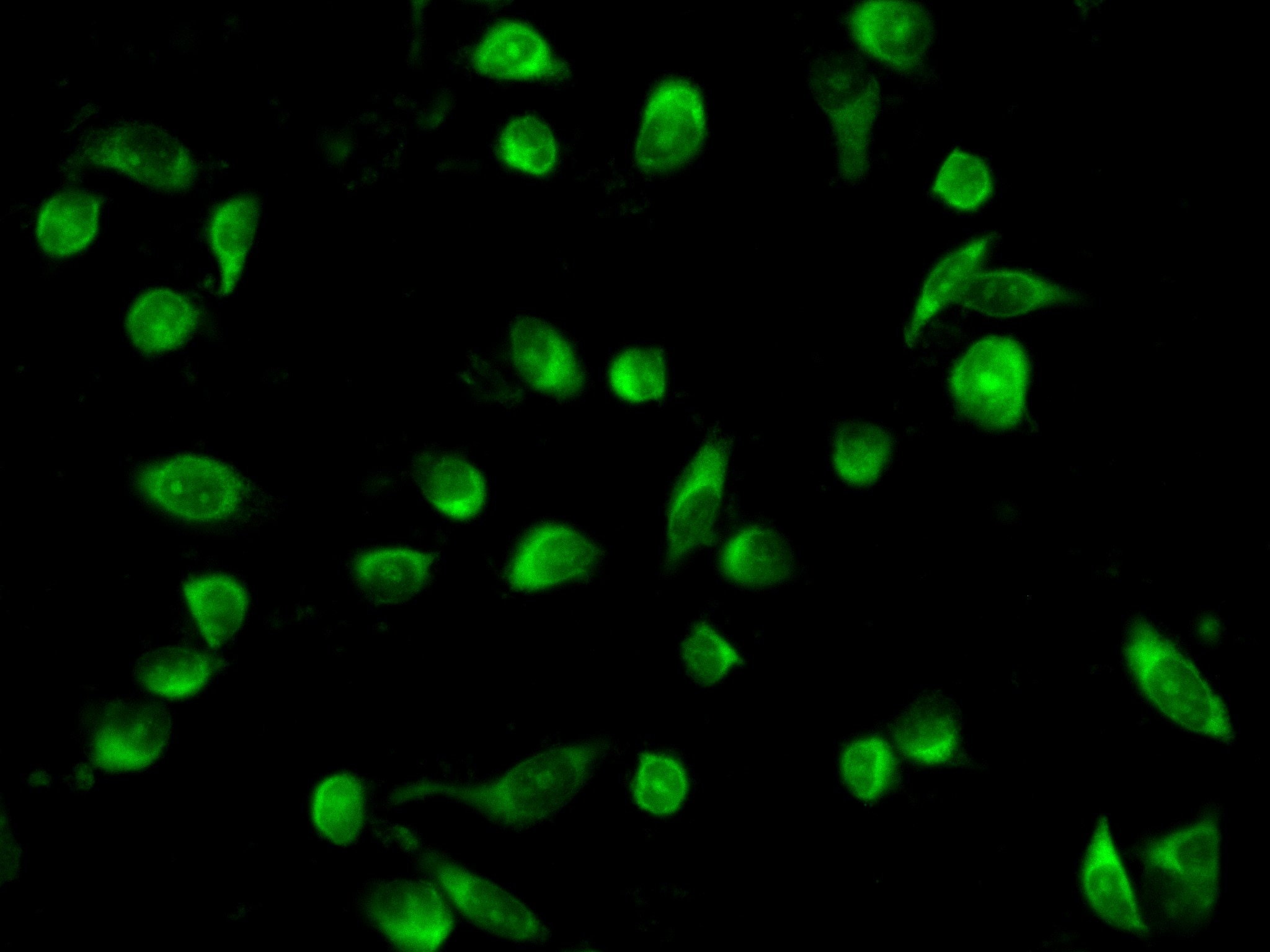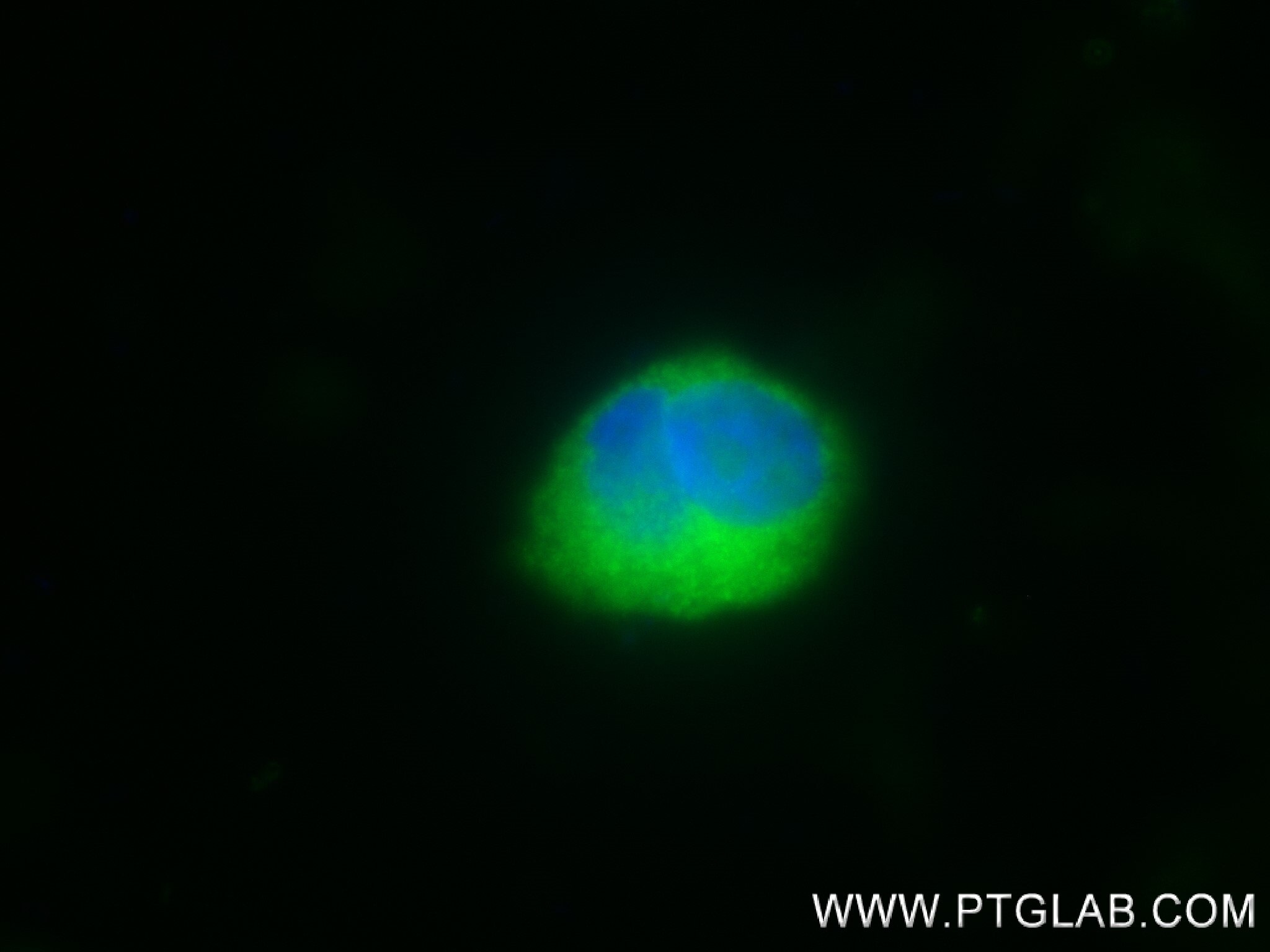FEM1B Rekombinanter Antikörper
FEM1B Rekombinant Antikörper für IF/ICC, FC (Intra), ELISA
Wirt / Isotyp
Kaninchen / IgG
Getestete Reaktivität
human
Anwendung
IF/ICC, FC (Intra), ELISA
Konjugation
Unkonjugiert
CloneNo.
240607D8
Kat-Nr. : 83810-1-RR
Synonyme
Geprüfte Anwendungen
| Erfolgreiche Detektion in IF/ICC | PC-3-Zellen |
| Erfolgreiche Detektion in FC (Intra) | A431-Zellen |
Empfohlene Verdünnung
| Anwendung | Verdünnung |
|---|---|
| Immunfluoreszenz (IF)/ICC | IF/ICC : 1:125-1:500 |
| Durchflusszytometrie (FC) (INTRA) | FC (INTRA) : 0.25 ug per 10^6 cells in a 100 µl suspension |
| It is recommended that this reagent should be titrated in each testing system to obtain optimal results. | |
| Sample-dependent, check data in validation data gallery | |
Produktinformation
83810-1-RR bindet in IF/ICC, FC (Intra), ELISA FEM1B und zeigt Reaktivität mit human
| Getestete Reaktivität | human |
| Wirt / Isotyp | Kaninchen / IgG |
| Klonalität | Rekombinant |
| Typ | Antikörper |
| Immunogen | Peptid |
| Vollständiger Name | fem-1 homolog b (C. elegans) |
| Berechnetes Molekulargewicht | 70 kDa |
| GenBank-Zugangsnummer | NM_015322 |
| Gene symbol | FEM1B |
| Gene ID (NCBI) | 10116 |
| Konjugation | Unkonjugiert |
| Form | Liquid |
| Reinigungsmethode | Protein A purfication |
| Lagerungspuffer | PBS with 0.02% sodium azide and 50% glycerol |
| Lagerungsbedingungen | Bei -20°C lagern. Nach dem Versand ein Jahr lang stabil Aliquotieren ist bei -20oC Lagerung nicht notwendig. 20ul Größen enthalten 0,1% BSA. |
Hintergrundinformationen
FEM1B, also named F1AA and KIAA0396, belongs to the fem-1 family. FEM1B is a component of an E3 ubiquitin-protein ligase complex, in which it may act as a substrate recognition subunit. FEM1B is involved in apoptosis by acting as a death receptor-associated protein that mediates apoptosis. It is involved in glucose homeostasis in pancreatic islets.
Protokolle
| PRODUKTSPEZIFISCHE PROTOKOLLE | |
|---|---|
| IF protocol for FEM1B antibody 83810-1-RR | Protokoll herunterladen |
| FC protocol for FEM1B antibody 83810-1-RR | Download protocol |
| STANDARD-PROTOKOLLE | |
|---|---|
| Klicken Sie hier, um unsere Standardprotokolle anzuzeigen |




